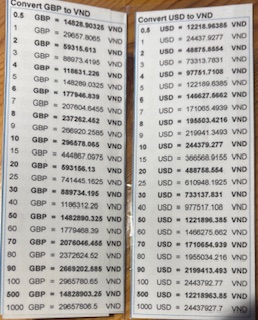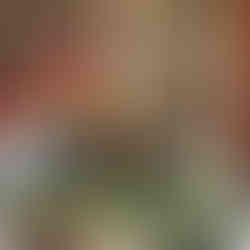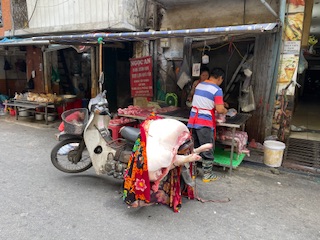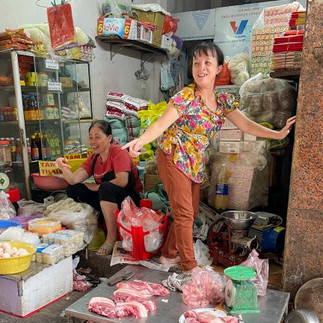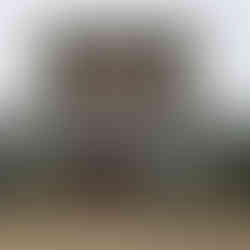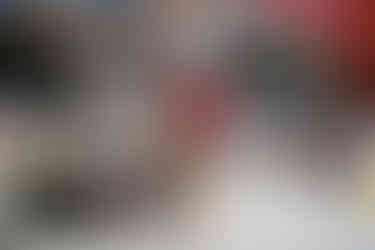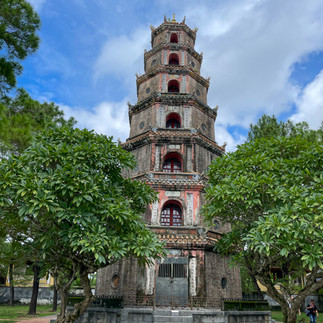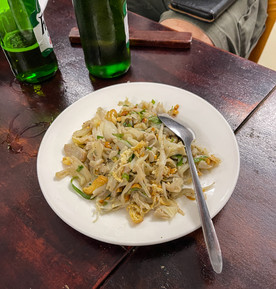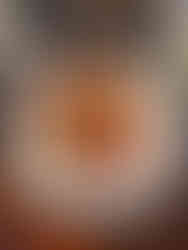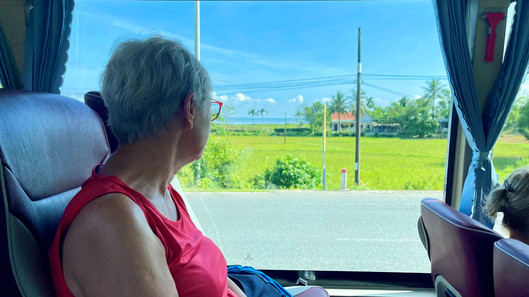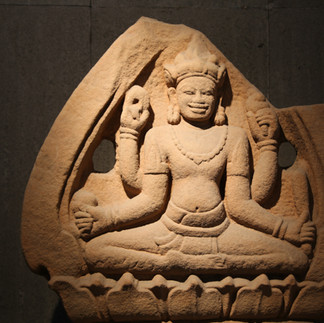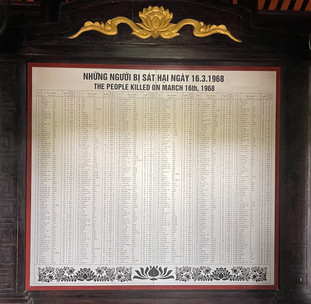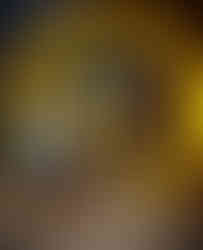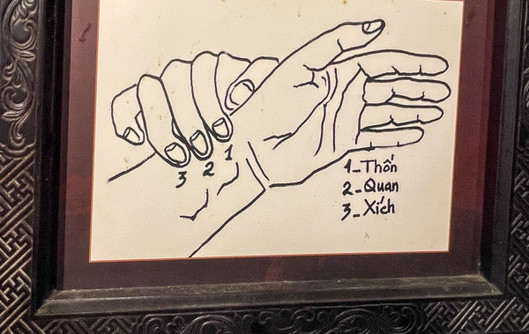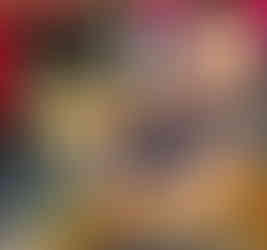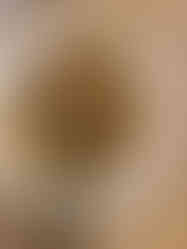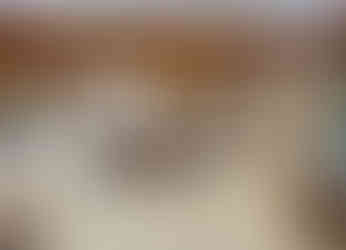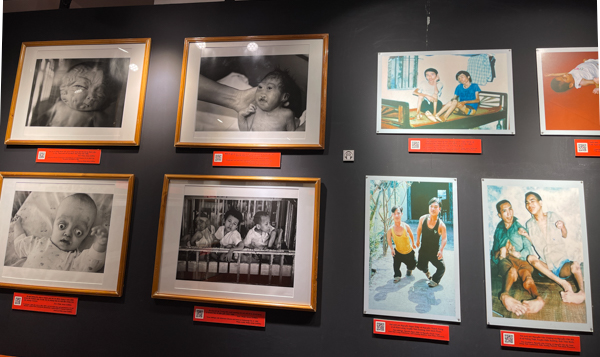Exploring Vietnam
- lisaluger
- Oct 19, 2023
- 58 min read
Updated: Feb 6
21st October until 5th November 2023
For a long time, we wanted to see Vietnam. Dave had been in 1992, shortly after Vietnam was opened to tourists. Lisa has never been. Finally, we decided on an organised tour by Explore called "Inside Vietnam". We have travelled with the Explore travel company several times before. They are usually well-organised, and so far, we had mostly luck with our fellow travellers. The tour of 15 days is packed with sights and activities, and we will be very busy. We plan to write in this blog about some of our many experiences, and we hope we will have time to do so. If not, don't despair; we will continue and finish the travel blog once we are back home.
Below is a map of Vietnam (in red) with the surrounding countries, such as China, Laos, Cambodia and Thailand.
We will start in Hanoi and travel via Halang, Hue and Danang to Hoi An. From there, we will go to Ho Chi Minh City (formerly Saigon), where we will visit the Mekong Delta and the Cu Chi Tunnels, among others. There is a lot to see. But more about that once we are there.

Trip Overview: Inside Vietnam
Our tour "Inside Vietnam", organised by the tour operator "Explore", offers a varied programme with a variety of activities. It promises trips to spectacular landscapes. We will learn about Vietnam's ancient and modern history and rich culture, as well as its colonial influences. And, of course, Vietnamese food is a theme, as well as meetings with Vietnamese people. We will also visit many memorials or sites of the Vietnam War.
Visiting sites associated with the Vietnam War has become a profitable part of the Vietnamese tourism industry. Some call it "dark tourism" and argue that it is voyeuristic and inappropriate for tourists to visit war sites where tragedies took place and for local businesses to make money from it.
So the question is: why do people want to visit these sites? More so, why do we want to see these sites?
For our generation, the Vietnam War is a special war.
It was the first war the US lost, which dramatically changed the perception of America as a superpower.
It was also the first war in which the media exposed wartime atrocities and government lies, fundamentally shifting public opinion not only about the war.
Out of the confrontation with the horrors and futility of the Vietnam War emerged the anti-war movement of the youth of the time, or rather, the peace movement. "Make Love, not war!" was the anti-war slogan.
It is, therefore, fair to say that the Vietnam War and the protests against it have shaped our generation.
We want to visit these memorials and war sites to understand what happened in Vietnam at that time.
We expect a respectful and informative tour that deals with contemporary history and is not oriented towards sensationalism. Our interest is to use the knowledge and insights about the past also for the assessment or understanding of current events.
Some background information on Vietnam
The long shape of Vietnam is determined by its natural borders. To the east is the South China Sea, and to the northwest and west are the mountains that separate the country from its neighbours, Laos and Cambodia. Vietnam's long shape is often referred to as the "bamboo with two rice bowls", whereby the two fertile lowland regions, the Red River Delta in the North and the Mekong Delta in the South, are the rice bowls and the thin area in between is the stick of bamboo carrying the two rice bowls. This refers to how goods such as food or water are traditionally carried.
Vietnam's Fight for Independence
Our guidebook states: "The Chinese, the French, the Japanese and later even the mightiest power on earth, the USA – all staked claims of various kinds on the small nation in Southeast Asia. And all their exertions ultimately ended in defeat and enforced retreat."
This means, throughout its history, Vietnam was fighting for its independence from the Chinese, the French, the Japanese and later the US. I wanted to know more about Vietnam's challenging history beyond the infamous Vietnam War. Without wishing to go into too much detail, I summarise here some key issues I found for those interested.
In the early 19th Century, Vietnam faced claims to power from two foreign rivals, China and France. In the mid-19th Century, France occupied all of Indochina (Cambodia, Laos and Vietnam). Vietnam was split into three parts: the Colony of Cochichina in the South, the Annamprotectorate in the Centra and Tonkin in the North. In the 20th Century, an anti-colonial movement began, initiated by the educated upper class, whose sons and daughters went to schools in France. During the Second World War, the Japanese occupied the country from 1940 but still tolerated the French administration.
Japan finally, in 1945, granted independence to Vietnam. The Japanese disarmed the French colonial army and put Nguyen Emperor Bao Dai in charge to rule under their supervision.
At the same time, Ho Chi Minh called for an armed revolt for Vietnam's independence. On 02 September 1945, he proclaimed the nation's independence. The Democratic Republic of Vietnam was born. BaoDai had to surrender, and for the first time, Vietnam held democratic elections in January 1946.
The First Indochina War
Even though France had officially recognised the independence of Vietnam, they occupied Saigon and Hanoi shortly afterwards. In November 1946, the First Indochina War between France and Vietnam began, which should last several years. Ho Chi Minh's Government was forced underground, and in 1948, the former emperor, Bao Dai, was reinstated by the French as regent of the formally independent state of Vietnam.
This basically colonial conflict was heavily overshadowed by the Cold War: China and Russia supported the North with weapons and recognised its Government as legitimate. The Western states sided with France and its marionette leader, Bao Dai. The French army was unsuccessful; in the decisive Battle of Dien Bien Phu in 1954, the Vietnamese People's Army defeated the French troops.
At the "Geneva Conference" in Paris in April 1954, the different sides of the war, as well as the neighbouring countries Laos and Cambodia and the four world powers (the US, the Soviet Union, China and Great Britain) met to determine the future of the country. The decision was taken to have a provisional demarcation line at Dang Ha to divide the country up provisionally until an all-Vietnam election planned for July 1956. But Dong Ha became a permanent border for the next 21 years.
In the North, under Ho Chi Minh, the communists ruled their separate part of the country from the capital, Hanoi. The urban and rural family businesses were put under state control. Those in power cleansed the North of the country, and alleged traitors were denunciated and executed. As a result, about 1 Million North Vietnamese fled to the South. In addition, the rigorously enforced land reform in 1955/56 increased the insecurity among the population and led to uprisings in the North.
In the South, Saigon was proclaimed the Capital of the pro-West Republic of South Vietnam in 1955. The anti-communist and Catholic Ngo Dinh Diem became head of state. He cancelled the planned All-Vietnamese elections in 1956 and declared himself President. South Vietnam and the US never signed the Geneva Conference agreement.
The French Army left South Vietnam in 1956. From the mid-50s, the US sent military help and advisors to South Vietnam to resolve the conflict between North and South in favour of the pro-Western South. Meanwhile, the South Vietnamese Government transformed into a dictatorship that targeted Buddhists, other religious groups and political dissidents with ruthless violence.
In 1963, Buddhist monks publicly self-immolated, and South Vietnamese students demonstrated in the streets. More information.
The Vietnam War (the Second Indochina War)
The Vietcong (Vietnamese Communists) was a guerrilla organisation in the South and had been part of the resistance since 1956. The South Vietnamese opposition, politically persecuted and driven underground, founded the National Liberation Front (NFL, with support from the Communists in Hanoi. From the early 60s onwards, the US sent increasing numbers of military advisors to South Vietnam as they feared that a Communist victory in Vietnam would cause a domino effect in the neighbouring countries. In 1963, after several failed attempted coups, the military removed Ngo Dinh Diem as President, supported by the CIA and President John F. Kennedy.
The so-called Gulf of Tonkin Incident is considered the official cause of the Vietnam War, the Second Indochina War. In August 1964, the US destroyer "Maddox" engaged in a gun battle with two torpedo boats off the North Vietnam coast. Later investigations revealed that the Maddox had been involved in a secret manoeuvre with the South Vietnamese navy. US President Johnson used this incident as a pretext for sending reinforcement troops to South Vietnam and ordering the bombing of North Vietnam, with the approval of Congress. The Americans never officially declared war on North Vietnam.
The task force "Operation Rolling Thunder" was the starting point for the US entry into North Vietnam. In March 1965, 25,000 Soldiers went on land in the area of Da Nang. In the following years, their number rose to half a million.
The US military aimed to drive with their state-of-the-art weaponry the Communist soldiers out of South Vietnam and defeat the North. Yet, the Vietcong used guerilla tactics against US troops, partly supported by the rural population. The South Vietnam government had lost the sympathy of many farmers due to their repressive governance. To disrupt the support of the Vietcong by the South Vietnamese rural population, many of them were relocated to the cities or fortified villages. The South Vietnamese underground fighters (called Charlie by the Americans) inflicted losses on the American soldiers through landmines, tiger traps, surprise attacks and acts of sabotage.
The tunnels of Cu Chi helped the Vietcong to become virtually invisible. These tunnels are today open to the public. During the day, the US troops seemed to prevail, but during the night, the Vietcong fought back and was able to strike severe blows. However, a victory by the Communist guerillas was not possible because of the superiority of the Americans, South Vietnamese and soldiers from other allied nations.
To end this military stand-off, the US Army Chief of Staff, General Westmoreland, even called for the use of nuclear weapons. Instead, he ordered Agent Orange, a chemical pesticide containing dioxins, to spread widely over vast areas. The favourite target of these defoliation operations was the so-called Ho Chi Minh Trail, a 16,000km long heavily branched network of trails that partly crossed over to Laos and Cambodia. The US forces also dropped napalm and conventional bombs on these paths to disrupt the military supply from the North to the South.
A turning point of the war was the Tet Offensive. On 31 January 1968, the Vietnamese New Year's Day, called Tet, despite the agreed ceasefire, the fighters of Ho Chin Minh and the Vietcong attacked the positions of the American and South Vietnamese forces. Although the Tet Offensive was not a success, as the Vietcong and Ho Chi Minh's fighters suffered severe losses, public opinion in the US on the Vietnam War changed. The news reports proved that the American war propaganda about the near end of the war was all but lies, and the pictures came as a shock. The anti-war movement in America and Western Europe grew exponentially. In the same year, President Johnson announced official peace negotiations that began in May 1968 in Paris; despite the ceasefire, a condition for the talks, only lasted a short while.
The End of the War
Despite the peace talks and secret negotiations, the war continued for several years with heavy bombings of Hanoi. On the 27th of January 1973, the opponents signed the Paris Peace Accords that ended the war and guaranteed the withdrawal of the US forces.
However, a national reconciliation was far away.
After the US military troops withdrew, the North Vietnamese Government pushed for victory over the South. In early 1975, they launched a large-scale attack. Thousands of South Vietnamese soldiers fled when the North Vietnamese troops closed on Saigon. President Nguyen stepped down and fled to Great Britain. On the 30th of April 1975, the North Vietnamese and Communist troops marched into Saigon and conquered the presidential palace with no resistance offered by the South Vietnamese troops. The Republic of South Vietnam surrendered unconditionally.
The outcome of the war was horrendous. The whole country was bombed to the ground; its infrastructure was destroyed. Hundreds of thousands were injured or disabled. 10 Million homeless refugees and former soldiers strayed around the devastated country. Much of the country's wildlife and its forests were destroyed through the use of 80 million litres of defoliant by the US military. Numerous deformities of newborns in Vietnam can be traced back to the excessive contamination by Agent Orange. Dioxins have a long-term effect on the food chain, and years after the war ended, they are cited as the cause of multiple cancers.
Reunification
The first Vietnamese elections took place in April 1976 and were won by the Communists. North and South were reunited when, on 2 July 1976, the Socialist Republic of Vietnam (SRV) was founded, with Hanoi as the capital. Ho Chi Minh, who had died in 1969, did not live to see this victory.
The reunification was accompanied by a rigorous takeover, restructuring and cleanup of the capitalist South. The country's economy and agriculture were nationalised. Intellectuals and political opponents were persecuted and put in so-called re-education camps. Religious freedom was seriously restricted. The changes were severe and led to the largest flood of refugees at these times. About 2 million people, mainly ethnic Chinese well-to-do business people, for whom there was no place in a communist system, fled Vietnam between 1975 and 1990, mainly as boat people across the China Sea.
In foreign political terms, Vietnam's Government moved closer towards the Soviet Union, to the displeasure of the Chinese allies, who stopped their aid in 1978.
Present-day Vietnam
The country found itself after the war in a difficult situation. Its infrastructure and industry were destroyed; the region had suffered natural catastrophes, huge military costs, inflation and China's decision to stop the aid, all exacerbated by an international embargo, the flight of educated parts of the population and increasing corruption. No wonder the collapse of the Vietnamese economy was imminent. Profound reforms were inevitable.
At the Sixth National Party Congress in 1986, far-reaching economic reforms were enacted. The political rulers opted for decentralisation and market economics. However, a consistent implementation did not take place. After another famine in the North at the beginning of 1988, the Government abolished the agricultural cooperatives for good. Farmers were allowed to lease land and sell their goods independently. During the 1990s, a new political generation came to power, replacing the old Communist regime with a "renovation of thinking". Finally, the new constitution of 1992 guaranteed the right to private property.
On February 3, 1994, President Bill Clinton ordered the lifting of the US trade embargo on Vietnam. Three years later, in 1997, the Vietnamese Government agreed to pay the debts of the South Vietnamese Government of about $140 million to be allowed to trade with the US. Following this, trade volumes boomed between the two countries. Also, in 1997, Clinton appointed former POW and US Congressman Pete Peterson as the first US Ambassador to Vietnam since 1975. President of the United States, Bill Clinton, made a historic visit to Vietnam in November 2000. He was the first US leader ever to visit Hanoi officially and the first to visit Vietnam since US troops withdrew from the country in 1975.[
Since the substantial economic reforms and the lifting of the US embargo, the country's economy has flourished with a double-figure growth rate. The country turned away from strongly supported heavy industry and again embraced the typical Vietnamese agricultural industries. Vietnam is now one of the biggest exporters of rice worldwide. The country successfully attracted foreign capital because of its enormous oil deposits, liberal laws, and a highly motivated workforce with low wages.
In recent years, the economy has shifted from a mainly agricultural focus to a service economy, whereby tourism plays an increasingly significant role.
Sources:
Vietnam. Marco Polo Handbuch. Marco Polo Travel Publishing Ltd. 2019.
Here, you can test your knowledge about the Vietnam War:
Media coverage changed the war
In no other war, the uncensored media coverage had such an impact, entirely different from what the American military strategists had planned. For example, reports about the My Lai Massacre on 16 March 1968 changed public opinion for good. In a 90-minute search and destroy operation, US soldiers killed 504 villagers: elderly, women and children. More information is here. https://www.britannica.com/event/My-Lai-Massacre
The pictures of Trang Bang in 1972 had an even more powerful impact on the world's public opinion. Some may remember the photos that showed a naked girl crying as she ran from her village destroyed by napalm bombs. This photo became an icon of the anti-war movement. More information here.

Tim Page was one of the most famous and fearless photographers during the Vietnam War. His exciting book 'Page After Page' where he told his story about his time in Vietnam, has been made into a mini-series called Frankie's House:
Dave was in contact with Tim Page before his first trip to Vietnam in 1992, and Tim gave him some information and recommendations on what to see and visit. Among them were the contact details of a Vietnamese photographer, Mr Hoang Van Cuong, who, in 1992, owned a bar in Saigon called the Cyclo Bar. He was a photographer during the Vietnam War. After the departure of the Americans and the fall of the South, he remained behind with his wife and family. He went into hiding to escape the victorious North Vietnamese as they took over Saigon and persecuted every potential political dissident and certainly those who had worked for the Americans. Hoang Van Cuong survived by becoming a farmer in the Mekong Delta. After nine years, he was captured and sent to the forced labour camps, euphemistically known as 're-education camps'. In 1989, after spending five years in this camp, he was released. Finally, after fourteen years, he was reunited with his wife and family.
Fortunately, he had been able to hide the negatives of the photographs that he had taken during the Vietnam War with members of his extended family. These photographs were on show in 1992 in a little gallery on top of his bar. He sold them for US $20 each to supplement his meagre income from his bar. All the famous war photographers at the time visited him, came to his bar and pinned their business cards on the wall of his gallery to offer their former colleague much-needed support.
During his visit in 1992, Dave bought two of his photographs, and they are still hanging on the walls of our living room in our flat in London. Dave was there just before Christmas and was told that a week before, Carol Thatcher, the daughter of former Prime Minister Margret Thatcher, was also there and had bought ten of Mr Cuong's photos as Christmas presents for her friends back home.
So, when we are in Saigon, we will definitely try and find the Cyclo Bar and hope to see Mr Hoang Van Cuong.
Here is a link to the remarkable story of Mr Hoang Van Cuong.
And here we go: Our tour begins
In the following, for each day of our tour, we will post the itinerary of our programme outlined by the tour company we are travelling with, Explore!, followed by our personal tales and impressions. Enjoy the trip with us.
Day 1: Saturday, 21 October 2023 - Departure
The Flight from Heathrow to Saigon, Ho Chi Minh City, was easy peasy. 13 hours flying for a bit more than 10,000 km. We were quite surprised about Vietnam Airlines because the reviews we read were pretty poor. The usually dead boring introduction to the security procedure was funny and caught our attention: They showed a video with flight attendants dancing traditional Vietnamese dances while explaining not to smoke, how to fasten your seatbelt or how to put your oxygen mask or safety vest on. The food was Vietnamese and very good; even so, we had to get used to having chicken noodle soup for breakfast. The alternative, hash brownies, bacon, scrambled eggs and bland bread, seemed not so exciting. The crew were generous with the wine and beer, and you were not lectured after one glass that alcohol is bad for you when flying, as we experienced all too often with British Airways, Virgin Airlines and American Airlines, while we could see that first and business class had an endless stream of Champagne and wine, in real glasses. What a surprise! With all our meals, we head real knives and forks and glasses, unknown for years, travelling in cattle class on other airlines. The selection of movies was interesting, too. You could only choose between Asian and Hollywood busters. I opted for three Vietnamese films (as I could not sleep) that had won many awards, and I was not disappointed. In particular, I liked a film called “The Scent of Green Papaya” about a young Vietnamese girl from the countryside working as a maid in a family in a town. A good introduction to a country that I had never visited before.
Day 2: Sunday, 22 October 2023 - Join the tour in Hanoi
Arrive in Vietnam's capital, famous for its rich culture, bustling life and colonial influences on their centuries-old architecture. Little lakes dotted around the city are encased by busy streets and secret alleyways waiting to be explored.
From Ho Chin Minh City, we had to continue our journey to Hanoi (another 2-hour flight), where we met the rest of the group to start our tour. We are a group of 13, mostly at a similar age as we, from 60 onwards, and as it turned out, with similar interests.
We are starting our tour in Hanoi, The "City between the Rivers", as the Vietnamese call their capital. Hanoi is also considered one of the most beautiful cities in Asia, with French charm and typical Vietnamese chaos, we are told. We will see.
Although Saigon played a vital role in colonial history and the wars of the last two centuries, Hanoi, located in the Red River Delta and the nearby mountains, is, with its over 4000 years of history, referred to as the cradle of Vietnam. Like no other place in Vietnam, we are told, the various eras characterise Hanoi's atmosphere. Kings, Confucius, colonial rulers, the military, and, more recently, capitalists made their mark on the city's landscape. It houses hundreds of temples and pagodas, many museums, colonial-era facades and modern highrise department stores. There is so much to see, but we have little time. We can only get a glimpse of the sights in the city.
Day 3: Monday, 23 October 2023 - Discover the sights of Hanoi, including the Old Quarter
This morning, we have a tour of the main sights of Hanoi. Architecturally styled like a French provincial town with tree-lined boulevards and substantial low-built houses, the city is wonderfully nostalgic. Among the interesting sights are the charming One-Pillar Pagoda, the Confucius Temple and the Presidential Palace. Ho Chi Minh himself, a spartan-living and scholarly man, chose not to live in the Presidential Palace; he preferred instead a simple teak stilt house specially built for him on the grounds. This afternoon, we walk through the narrow lanes of the fascinating Old Quarter, where the streets are named after various crafts or specialities: Paper Street, Silk Street, Basket Street and so on. The shops have very narrow frontages but are quite deep; they are known locally as tube shops. On the pavements, food sellers sell noodles, snacks and stir-fries from shoulder panniers. The smell of food mixes with the smell of incense from small temples dotted around.
Hanoi is super interesting. There is so much to see and so much to do. First of all, the food is very tasty. Our tour leader, Lan, always finds little restaurants and places for us to eat. On the first evening, he brought a big Coca-Cola bottle full of homemade rice wine made by his father. Very tasty, too, and it certainly loosened everyone up in the group.
Our tour leader tells us lots of stories about the Vietnamese way of life. I was very surprised about the small, tall houses all over Hanoi. He explained that the houses and grounds are very expensive. That’s the reason why most of the houses are only 3 meters wide but have several floors above. The houses are also called tube houses because although they are only 3 meters wide, they go far back, sometimes up to 60 meters, including perhaps a workshop, accommodation, courtyards, etc. Each house has a shop on the ground floor where the family sells something. This is another reason for the houses being small because the tax for the businesses is based on the size of the shop front. As the houses are so small, the goods are displayed on the pavement, and selling occurs there too. So it is difficult moving around on pavements, and often you have to go onto the busy streets, risking being run over by the masses of motorbikes.
There are many tiny restaurants where people sit on little chairs or stools. We also learnt that only a few people in Vietnam seem to have fridges. Therefore, they go shopping for food a few times a day. In Hanoi, no such thing as a big supermarket exists, but people buy in little shops on the street. That explains why we see so many food stores on the pavement offering vegetables, rice noodles, fish, seafood or meat. The shopkeepers get a delivery of food and prepare it on the pavement for sale. For example, at a butcher’s shop, half a pig was delivered in the morning (on a motorbike), and the female shop owner cut it into pieces for her customers to buy. Business was good, and by midday, the half-pig was gone. No need for a fridge.
The roads are full of motorbikes, scooters, bicycles and cars. I am very impressed with the size of the load the motorbikes and bicycles can carry and how they manoeuvre through the traffic.
We visit the Ho Chi Minh Mausoleum - but only from the outside, as it is closed to visitors on Mondays. Ho Chi Minh was embalmed here - but against his express wishes. He wanted his ashes divided into three parts and kept in three ceramic urns - the three parts were to represent the north, the centre and the south of the country.
Opposite the Mausoleum is the National Assembly building, where Ho Chi Minh read out the Declaration of Independence on 2 September 1945.
Not far from here is the former Presidential Palace, built from 1900 to 1908 as the residence of the Governor General. Ho Chi Minh did not want to live in the ostentatious building but had a more modest house built by the lake. In summer, when it was too hot, he moved into a small hut on stilts next door.
Of course, we also visit sights such as the One Pillar Pagoda and the Temple of Literature, which was the intellectual and spiritual centre of the kingdom for centuries.
Photos left to right: Ho Chi Minh Mausoleum, Presidential Palace and Literature Temple.
After watching the most important sites, such as the Ho Chi Minh Mausoleum and the Literature Museum, we explore the French Quarter. Here are many beautiful grand houses built by the French, which now mostly serve as Government buildings or where ambassadors live and embassies are housed. We see many mobile flower stalls where young beautiful women can buy or rent flowers for beautiful photographs, either taken by one of the many professional photographers or a friend or family member.
Shortly before 11 a.m., we have to go into a narrow road and sit in a coffee shop. We are excited as we are waiting for the train from Saigon (called the Reunification Express) to come through this very narrow road. This, we were promised, is a special experience. Some of us are sitting on a balcony, and some are downstairs near the tracks, ready with our cameras. Dave has been able to find a special place from where he has the perfect view, but the locals shout at him to go back to the house wall. They even bring out a tiny chair for him to sit on but still warn him to take his leg in because the train would be coming close. And we can already hear him coming long before we see him. But then we can see him. A huge tall train is coming at high speed towards us. We press our bodies against the wall. Dave quickly brings in his knees as the long train approaches and passes by so close - it’s almost claustrophobic. But very exciting.
Here is Dave's video clip of the impressive Reunification Express:
Afterwards, we have lunch at the cafe, where we watched the train from. It’s all well organised and businesslike. The train passes through about four times a day. The rest of the day and night, the railway track is empty, and families use it to put the dinner table out for the whole family and enjoy their meal. Luckily they know the timetable so they can relax.
We then walk for hours around the Old Quarter. This is a traditional old town with interesting architecture and many shops and markets. There are streets dedicated to selling silk, jewellery, baskets, shoes, soaps, paper, tin products, bamboo goods, food etc. It is fascinating wandering around the streets and taking in the sights and smells.
Later on, we go on a rickshaw tour around the old town. The rickshaws are like bicycles, powered by men with strong legs. This is a lazy way of getting to know the city, but after many kilometres of walking, we enjoy being lazy. Some of us even nod off.
At five pm, we have tickets booked for the water puppet show. Masses of people visit these shows, which are offered five times a day. A group of musicians and singers present traditional songs that accompany tales of traditional life in Vietnam about water buffalos, dragons, fishermen, rice farmers, etc. It’s lots of fun when the dragons spy water and the fish fly around and out of water. The puppets are handled behind a screen by a group of people who are standing up to their hips in the water. They move the puppets across the water with long bamboo poles and strings. Very impressive. I can only hope the water is warm or they have Neoprene suits on.
We had another delicious dinner in a small restaurant. Our guide selects places where the Vietnamese people go. They usually look unassuming, and we would possibly not choose to go there. We have not yet seen a tourist restaurant from the inside. Good so!

Day 4: Tuesday, 24 October 2023 - Free time in Hanoi, then drive to Halong Bay
We have some free time in Hanoi this morning, perhaps to visit some of the many museums or Ho Chi Minh's austere mausoleum, which resembles Lenin's in Moscow. Afterwards, we drive out towards the iconic Halong Bay in the Gulf of Tonkin. Thousands of jagged limestone islands rise out of the jade-green waters like the hairy scales of a submerged dragon. In fact, Halong means: 'Where the dragon descends to the sea'. As legend has it, the rugged seascape was created by the pounding tail of a dragon as he ran from the mountains into the sea, carving the islands in his wake.

This morning is free for exploring. We are going to the Hanoi Hilton. This is not a luxurious Hotel, but the infamous local Prison Hoa Lo in Hanoi, sarcastically called Hanoi Hilton by the American prisoners of war who, mostly pilots and flight technicians, were captured and detained when their planes were shot down. The most famous of them was John McCain, who later became a Democratic Senator but recently died. Donald Trump famously said of John McCain he was a loser because he was caught. McCain was captured and tortured and kept in this prison for five years until his release and that of all American prisoners of war after the Paris Peace Accords was signed on 27th January 1973.
The prison was originally built in 1896 by the French Colonisers. It was one of the largest and fortified prisons in Indochina at that time. It was handed over to the Vietnamese authorities in 1954 when the French left. A large part of the prison museum is dedicated to the history and poor and appalling conditions under which the French kept dissenting Vietnamese inmates in the first half of the 20th Century.

Another part is devoted to the American Vietnam War and the life of American prisoners in Hoa Lo Prison from 1964 to 1973. The exhibition is eager to show how well the Vietnamese treated the captivated American soldiers. The photos show they were given good food and allowed to exercise and play basketball and baseball, celebrate Christmas and receive food parcels from their families. This is somehow contradicted by reports from American soldiers of torture and interrogation we read before coming to Vietnam. The prisoners were also shown films to educate them about the Vietnam country and the people they had been fighting against. When the prisoners were finally released, they were given new clothes and a bag full of presents. All is there to see in the many photos.
What impressed me most was the part in the exhibition on the reconciliation process between the two countries, the US and Vietnam, after the war. Photos document the visits of US Presidents and diplomats and the efforts of reconciliation on the side of the US to make good for some of the damage they had done to the country, for example, through the use of Agent Orange. Also, many American soldiers had come back to visit the prison, reflect on their part in the war and beg forgiveness. The visit was certainly worthwhile and thought-provoking.

More information on https://en.wikipedia.org/wiki/Hỏa_Lò_Prison
In the afternoon, we made our way by bus to Ha Long, at the seaside. On the way, we stopped at a rice and vegetable plot, watching how the farm workers work the land.
In the evening, we went out for dinner. This time, our tour guide, determined to show us as many typical Vietnamese dishes as possible, ordered a hot pot for ten people. This is a big metal bowl with soup on a little gas cooker placed in the middle of our huge table. Then, all sorts of ingredients were placed around the hot pot: slices of beef and pork, various sorts of vegetables, tofu, and scampi, which were still alive and tried to jump off the plate. Our guide manned the hot pot and poured into the soup one plate full of goodies after the other. Each took a few minutes to boil; then he dished them out on our plates to eat. Very delicious! It was just a bit awkward watching when he threw the living scampi into the pot, and some tried to jump out to escape the boiling broth. Still, I have to say they tasted really good.
Hot pot with live scampi
Day 5: Wednesday, 25 October 2023 - Cruise Halong Bay; from Hanoi overnight train to Hué
This morning, we enjoy the romantic scenery of Halong Bay on a cruise amongst the islands. We'll have the chance to stop at a grotto beneath towering cliffs and perhaps visit a beach. It is interesting to see the curious assortment of tourist boats, traditional junks and wooden sampans gliding through the waters. We enjoy a seafood lunch on board the boat before returning to a hotel in Hanoi to freshen up before boarding the Reunification Express to Hué.
In the morning, we went on a boat cruise around Halong Bay. We were stunned by the beautiful bay, where over 1900 little islands stick out of the water. They all have different shapes and are called according to their form, such as chicken island, pig island, and turtle island. On one of the islands, Ti-Top, we stopped and walked up to a viewing point at the top from where we had a fascinating view. Afterwards, we visited a huge cave called Hang Sung Sat and admired the many impressive stalactites.
This UNESCO World Heritage Site, Ha Long Bay, is one of the most popular tourist destinations in Vietnam, attracting millions of visitors each year. In recent years, the number of tourists visiting Halong Bay has increased dramatically, making it one of the most visited attractions in the country. The Bay is particularly popular with tourists from nearby China. While in 2010, 1.6 million visitors came to Ha Long Bay, in 2022, the total number of visitors has been about 11.5 million. - Sadly, with all the negative side effects. Along the beach and all over the town, many high-rise hotels and apartment blocks were built that, in our view, spoil the view of the beautiful bay.
It was time to get back to Hanoi, but we stopped shortly at a pearl farm and learned how pearls are grown inside oysters by means of a kind of artificial insemination. Interesting. They also had a big shop with many beautiful pearl necklaces, rings and earrings on show. Unfortunately, a bit too pricy for us.
Then, we quickly had to rush back to Hanoi to catch our night train to Hue.
Day 6: Thursday, 26 October 2023 - In Hué; boat along Perfume River to Thien Mu Pagoda
We arrive in Hué, one of the great cultural and religious centres of Vietnam, a quietly impressive place. The Perfume River divides the city in two and has been the inspiration for poets and painters for many centuries. This afternoon, we will take a trip by boat along the Perfume River from Hué to the Thien Mu Pagoda. This serene temple is the oldest in Hué and also the symbol of the city.
We arrived in Hue at 10.30 in the morning after a 13 ½ hour train journey. The journey was okay. We had cabins with bunk beds for four people. Blankets and pillows were provided, but I was glad about my own thin silk sleeping bag as you never know how freshly washed these blankets were. I was surprised that I could sleep at all. The constant rattling of the old train seemed to have lulled me into sleep. Luckily, some of the boys in our group managed to get a few beers, which they shared with the group and which also helped send us to sleep. Each train carriage had two toilets. However, one needed to get used to operating the flush as the handle had gone and instead, a metal pin had to be pulled, switched and pressed to operate the flush. It required skill and patience, and I got it after a while, but not many passengers could be bothered. As a result, soon the smell was overwhelming. Beside each toilet was also a niche with a sink with soap and a towel to freshen up. In the morning, trolleys came through that offered breakfast, stale bread with undefined sauces. We preferred to nibble on our rice crackers, which we had brought with us and enjoyed sipping a hot cup of tea and slowly waking up, looking forward to our next adventure.
Hue, the Imperial City, now a UNESCO World Heritage Site, was once the capital of Vietnam between 1802 and 1945, ruled by the Nguyen Dynasty until Ho Chi Minh’s communist government took over and set up the capital in Hanoi. Hue is a gold mine for those interested in the cultural history of Vietnam. Hue Imperial City comprises the Forbidden Purple City, royal tombs, pagodas, temples, royal quarters, a library and a museum. Fortunately, many of its tombs, pagodas and castles survived the violent wars.

Once we arrived in Hue, we took one of the dragon boats that go along the Perfume River. Through lovely scenery, the boat brought us to the famous Thien Mu Pagoda, the oldest pagoda in Hue, built in 1601. It is surrounded by a wonderfully maintained garden with many flowers and plants.
The Pagoda also is known because it became a hotbed of anti-government protests against President Ngo Dinh Diem’s hard rule against Buddhists. A devoted Catholic, Ngo favoured Catholics and discriminated against Buddhists, for example, in public service, in the army and when distributing government aid. In the summer of 1963, the army killed nine Buddhists. Protests were held across the country, and the Thien Mu Pagoda became a major meeting place for the Buddhist movement and was often a place of protests. The Thien Mu Pagoda was the home monastery of Buddhist monk Tich Quang Duc, who shocked the world when he set himself on fire in Saigon in 1963 in protest against the persecution of Buddhists by the South Vietnamese government. In the garden of the Pagoda, the vehicle that drove Thich Quang Duc to Saigon in June 1963 is kept along with a picture of the burning monk (see photos above).
For lunch, our tour guide had planned a special treat for us. For centuries, the Royal Family employed their special cooks who prepared the most amazing dishes for them. Our tour guide organised for us to have lunch cooked by a family that had for generations cooked for the royal family. We entered the citadel to get to their home. And a royal meal it was indeed. This was the best meal we had in Vietnam and perhaps the best ever.
Our royal lunch consists of spring rolls, marigolds, rice, tofu, fried fish, green papaya salad, pineapple and many more delicacies. Besides our hosts, the royal chefs.
In the evening, Dave and I walked through Hue in search of a specific bar, which Dave had found on the internet, the DMZ Bar, for Demilitarised Zone. The bar was founded in 1994 as a place for war veterans and war-curious travellers to meet and take tours to the demilitarised zone that divided North and South Vietnam during the war. The DMZ was located just north of Hue and was a place of many battles.
We found the bar, had a drink there, and Dave bought a T-shirt with a map of the DMZ on the back. We had a lovely talk with one of the waiters, a young student of journalism. (In Vietnam, many restaurants and shops employ students to work as there are no government grants, and the young people have to find work to maintain themselves through their studies.) He shyly approached us, whether we wouldn’t mind talking to him. He wanted to practice his English. He had many questions about our travels, our experiences and our life experiences. We also discussed the importance of good journalism and the professional ethics of a journalist. We explain our opinion that a journalist must have a backbone and report truthfully. He agrees but admits that this is not always possible in a country like Vietnam.
Day 7: Friday, 27 October 2023 - In Hué, visit the Imperial Citadel; free afternoon
This morning, we appreciate Hué's fascinating history with a visit to the Imperial Citadel. Located on the left bank is the river; this palace was built by the Nguyen dynasty, Vietnam's ruling emperors from the early 1800s to 1945. The Citadel has formal moats and impressive ramparts that were constructed by 20,000 men and was a copy of the Forbidden City in Beijing. Although most of the inner part of the city was totally destroyed during the month-long Tet Offensive in 1968, the vast outer walls and the west wing remain an eloquent reminder of the palace's former glory. The remainder of the day is free perhaps to explore some of the outlying Tombs of the Emperors.
We spend the morning exploring the Citadel and strolling about the grounds and gardens of the palace. Unfortunately, the palace is being renovated, so we are unable to see the inside of the palace. More information on the history of this interesting place is here to find: https://en.wikipedia.org/wiki/Imperial_City_of_Hue
In the afternoon, after an opulent lunch at a monastery (veggies only), we visited a village where they produce incense sticks. We learn how to make them and can practice making sticks with cinnamon, lemongrass, and jasmine smells.
At the incense workshop, I learned how to make incense sticks. Dave has a rest between the many colourful, lovely-smelling sticks.
The rest of the group continued afterwards to explore some of the Tombs of the Emperor further afield. We gave this a miss and decided to go back to Hue to explore the city, enjoy a cup of coffee in one of the many nice cafes and watch the world go by.
Day 8: Saturday, 28 October 2023 - Scenic drive via Danang to Hoi An
We enjoy a scenic drive across the spectacular Col des Nuages, otherwise known as the Hai Van Pass, observing rural scenes of thatched, wooden houses and lime-green rice paddies as well as enjoying panoramic sea views. Pausing in Danang, once the centre of the Kingdom of Champa (2nd century AD - 1720), we visit the Cham Museum, home to a fine collection of Cham sculptures. Our next stop is at the nearby five peaks of the Marble Mountains, said to represent the five elements of water, wood, fire, gold and earth. Naturally formed grottoes have been transformed into heavily carved Buddhist sanctuaries. A short distance from the mountains, we find the white sands of My Khe Beach (nicknamed China Beach by American troops)- an ideal spot for a brief rest. Finally, we reach our destination - the UNESCO World Heritage town of Hoi An.
Today is a day of travelling. So we simply sit back and relax and enjoy the beautiful landscape passing by on our way to Da Nang. We are mightily surprised by the beauty of the area and the flash greens surrounding us, knowing full well that 50 years ago, during the American war, this all had been destroyed by Agent Orange and other chemical weapons. Amazing how nature recuperates itself.
Drive towards Da Nang Bay
Once we arrived in Da Nang Bay, we walked along China Beach and visited the Cham sculptures in the famous Cham Museum. After that, we drove on to explore the Marble Mountains and some beautiful pagodas and temples.
Exhibition of Cham sculptures in the Cham Museum in Da Nang
The China Beach and the Marble Mountains
Day 9: Sunday, 29 October 2023 - Free day to explore Hoi An; optional visit to My Lai
The historic merchant town of Hoi An had become one of the busiest international trading ports of Southeast Asia by the 17th and 18th centuries. First colonised by the Portuguese in the 16th Century, it still retains its medieval charm today, with many of its old buildings superbly preserved. The day is free to explore at leisure. You may choose to visit the Japanese Bridge or some of the Chinese temples and meeting halls in the Old Town. There are many shops, bars and restaurants in this charming town, and it is a great place to buy souvenirs, have clothing tailored, or simply watch the world go by in a riverside café. You may wish to take an optional excursion out to the site of the My Lai village massacre memorial. The massacre was a significant turning point in the American War, and the horrific story is told through a very emotive exhibition of photography.
Another option would be to take a fishing trip out to the Thu Bon River Delta, where we learn how to fish using a traditional cast net. Travelling out by boat, we meet local fishermen and try our hand at cast net fishing as well as trying the bamboo winches used to haul in the huge drop nets from the river. We also have a chance to go out in a Vietnamese 'basket boat' - a circular boat constructed from bamboo that takes a little practice to row!
Hoi An is a lovely town, now a UNESCO World Heritage Site. There is so much to see and so much to do. Most of the group decided to go out by boat along the river, learn how to make baskets boats, how to fish and also go for a bicycle ride.
We took the opportunity to visit the village of My Lai, and together with another couple, the four of us undertook the five-hour return trip by minibus to visit the site of the massacre.
When we reach My Lai, we are the only visitors apart from a small group of Scandinavian tourists. Inside the reception is a small photo exhibition giving information on the massacre. Some photos are well-known around the world. We can also see models of the village and its houses before and after they were destroyed. Accounts of some US soldiers are also on display of how they tried to interfere to stop the atrocities committed by their fellow soldiers. A video explains the development of the museum, which was set up by one of the survivors decades after the massacre. He is shown in one of the pictures below with an umbrella against the background of graves. The video also presents eyewitnesses and survivors as they visit the museum and tell their experiences. There is a touching and tense scene in the film when a former US soldier revisits My Lai years after and is confronted with the atrocities he and his fellow soldiers have committed.
In a nearby temple, the names of the 504 people who were killed that day are written on a huge plaque.
Outside, we can see the ruins where the houses once stood, and small plaques give the names and ages of those killed in this family. One house has been restored to demonstrate how the families in this village lived. The entrance to an artillery shelter can be seen. A big tree has a plaque saying that it had survived and witnessed everything that was going on.
My Lai Massacre:
The name of My Lai is probably familiar to many, even those with only a basic knowledge of the Vietnam War. The village has tragically become infamous through the brutal action of the US Army on 16 March 1968, going down in history as the My Lai Massacre.
Here is a link to more information on the My Lai Massacre by Britannica. https://www.britannica.com/event/My-Lai-Massacre
Dave's comments on My Lai:
My Lai was the place, and 16th March 1968 was the date of what would forever become known as the infamous My Lai massacre, where U.S. soldiers killed 504 civilians. The victims included men, women, children and infants. Some of the women were gang-raped, and their bodies mutilated. It became the largest publicized massacre of civilians by U.S. forces in the 20th century. Twenty-six soldiers were charged with criminal offences, but only Lieutenant Willian Calley, a platoon leader, was convicted. He was found guilty of murdering 22 villagers and was originally given a life sentence. He served only three-and-a-half years under house arrest after U.S. President Richard Nixon commuted his sentence. I visited the My Lai memorial site 31 years ago, and it was a deeply disturbing experience as it was on my second visit. Certain elements of the memorial site have changed over the years. The museum had grown bigger, as did the trees and shrubs within the memorial site. The drainage ditch is still there, and what remains of the homesteads. The small plaques giving the names and ages of the victims who were killed remain. As we drove away, I felt a feeling of sadness, for there were only a handful of other people visiting the site, and I was expecting there to be a lot more visitors. The Vietnam War, called the American War by the Vietnamese, came to an abrupt end on 30th April 1975. That was when North Vietnamese tanks rolled through the gates of the Presidential Palace in Saigon, effectively ending the Vietnam War. That was 48 years ago, and our generation remembers that war vividly as it was on the T.V. news most nights. The younger generation can read all about the Vietnam/American War in history books. Today’s generation can watch the latest conflicts and wars in real time on 24-hour T.V. news channels and social media. Alas, our generation is also becoming part of history.
To lift up our sombre mood after this experience, on our return, we stroll through the beautiful town of Hoi An. We walk along the river, admiring the traditional houses, the temples and the many lanterns and balloons which give the town a romantic atmosphere, particularly at night.

Day 10: Monday, 30 October 2023 - Visit ancient My Son; free afternoon in Hoi An
A further day is spent based in this lovely historic town. This morning, we take an excursion to the holiest and most evocative of Vietnam's Cham sites, My Son. The Chams were dynastic lords who rejected the authority of China in 2AD and established their own kingdom. Although they benefited from strong sea links with the rest of Southeast Asia, the kingdom's interior could not supply sufficient food for a strong military force. For 1,000 years, they managed to stave off attacks by the Vietnamese and Chinese before being overcome by the Vietnamese in the 15th Century. The track that leads to the site is slow and bumpy through wooded hills, but the site is certainly impressive, with several groupings of Cham temples to be visited. Nowhere are the fine masonry skills of the Chams more evident than at My Son, despite the fact that much of the site was bombed in the 1960s. The afternoon is free to enjoy Hoi An further. A cookery class at one of Hoi An's restaurants is a popular choice, as is the lantern-making workshop where you can learn how to make the ubiquitous lanterns in Hoi An. The beach is only a short drive by taxi alternative. Alternatively, a boat trip on the river as the late afternoon sun lights up the riverfront is a treat.
Today is my birthday!! And a special one, too. 70 years young. I can't believe it. Age is just a number, and I don't feel anywhere near that. (yet!) Anyway, we wanted to celebrate this special occasion in style by going to Vietnam. And here we are.
We decide to have a leisurely morning. We drop out of the scheduled trip to explore the Vietnam Cham temples, an hour's drive outside of Hoi An. Instead, we want to explore more sites of beautiful Hoi An.
Unfortunately, it is raining, but that does not bother us. The hotel gives us big umbrellas, and off we go. The rain is warm anyway.
This time, we want to discover Hoi An by day. We walk along the river, admire the traditional houses and visit some temples. Hoi An was once an important Southeast Asian trading port from the 15th-19th centuries. Miraculously, the city was spared the bombings during the American war, and the old charming yellow-painted houses and buildings have been preserved. We observe some tourists and locals as they get on with whatever they are doing.
When we stroll through the market, the rainwater is dripping from the makeshift tarpaulins to cover the stalls. The market traders and their customers go about their business undaunted. But we have enough of the rainwater dripping on our necks, and to escape the rain, we visit a few of the many clothes shops. In Hoi An, you see someone with a sewing machine in almost every house. The town is known for its skilled tailors who offer to make clothes for you within a day. I decide against it as time is tight but buy myself a birthday present, a nice thin top that does not take up too much space in my luggage.
We also visit some museums, such as the cultural and folklore museums. I was particularly interested in the Museum of Traditional Medicine. Traditional Medicine in Vietnam has a long-standing history. It is influenced by traditional Chinese medicine but differs as it uses primarily herbs and plants, either fresh or dried, and does not use complex concoctions like Chinese medicine, so we are told. The museum is housed in a typical old Hoi An building with traditional architecture. The rooms of the front building are reconstructed as the traditional medicine shop in Hoi An, including the areas with cabinets for herbal medicine, the place for pulse diagnosis and the waiting area for the patients. The courtyard is a place for drying herbs and preserving medicines. In the rear building, some methods of processing herbal medicines are presented. The rooms on the upper floor display and introduce traditional Vietnamese medicine, tools, equipment and information.
The museum is interesting, and I could have spent some more time there, but now it's time to go home. The rest of the group will be back soon, and the tour leader has asked Dave to make sure that we are back in the hotel by 12 midday. I wonder why? At 12.30 we get a phone call saying they would be late for another half hour.
Finally, they arrive, and I am presented with a birthday song, a card, flowers and a lovely cake and congratulated on my special day. Most of the group had already wished me happy birthday at breakfast, but there can never be enough gratulations and good wishes. I dish out the cake to all of us, and it tastes delicious.
I am happy with my birthday celebration. Only later, I was told that there was a bit of a hiccup.

Apparently, our tour leader mixed up the birthdays. He sang Happy Birthday, dear James, on the bus, but no one joined in the singing because it was not James's birthday, but mine. Shortly before coming back, he told one group member they had to stop by a bakery to pick up the cake he had ordered for James for his birthday.

His jaw dropped when he noticed he had ordered a birthday cake for the wrong person and with the wrong name on it. My birthday cake did not have a name, but I did wonder why some in the group had red fingers. Some had carefully scraped away James's name. To make up for it, the guide wanted to go and find a bunch of flowers for me. That explains the delay. What a lovely story. I will never forget this birthday. It was a running joke throughout the rest of the tour.
Cooking class
The birthday celebrations continue. Later in the afternoon, we have a cooking class, and the host greets us with a round of delicious homemade rice wine to toast to my health. How nice! Thank you!
Eleven of our group have opted for this cooking class run by the famous Chef Hung Nguyen and his team. And now we are ready to learn how to cook some very tasty Vietnamese dishes. Each person has a stove in front of them. The ingredients for each dish are measured and prepared. The Masterchef explains the ingredients and shows us how to prepare and cook the dish. Afterwards, it is our turn, and he and his assistants supervise, meaning they help us to cook the dish. It is enjoyable, but no matter how hard we try, the dish never looks as good as when the professional chefs do it. Still, it tastes very nice.
We start by learning how to cook a Vietnamese fried rice pancake, then grilled fish in banana leaf, and after that, green papaya salad with chicken and vegetable spring rolls. After preparing each dish, we eat it immediately at our table. This way, we are not kept too hungry, having to wait until the end of the cooking session.
At the end of the cooking class, Chef Hung handed us a little booklet with the recipes for the dishes we learned to cook. This was a great experience, and we certainly will try to cook this at home.
We thank our chef and his assistants and make our way through the ongoing heavy rain. The plan was to finish the day with a round of birthday drinks in a nice bar, but given the heavy rain and the many deep poodles of rainwater, we decide to postpone the drinks to another day and make our way home. Despite the umbrellas, we arrive at the hotel wet through and hope everything will dry out until we have to move on the next morning.
Day 11: Tuesday, 31 October 2023 - Fly to Ho Chi Minh City; drive to Mekong Delta
After a short drive to Danang Airport, we fly to Ho Chi Minh City, from where we drive further south to Ben Tre in the Mekong Delta. Surrounded by lush and fertile land, the area is home to small villages and swaying coconut palms. We take a local ferry to a nearby village, which we explore by trishaw. Later, we board sampans, which are small Chinese wooden boats, and cruise along the narrow canals that shoot off the main vein of the Mekong River. After lunch at a local house, we have some free time to explore the area further. Finally, we return to Ben Tre by boat, where we spend the night in a local homestay with shared facilities and dorm-style accommodation.
At 5 o'clock, we receive a wake-up call from the hotel reception. We are already awake as we must be packed and ready in the lobby at 5.15 am. Our bus brings us to the Da Nang Airport, one hour away, to catch our early flight to Ho Chi Minh City. While waiting at the airport, we unwrap our packed breakfast given by the hotel. However, used to their usually excellent and abundant breakfast, we are somehow disappointed when we only find stale bread, a boiled egg and a banana. Never mind. The delicious hot tea from one of the coffee shops and a few leftover rice crackers make up for it.

At Ho Chi Minh Airport, our bus brings us to the Mekong Delta. The journey takes 2 ½ hours. The Mekong Delta is the region in southwestern Vietnam where the long Mekong River that originates in Tibet flows into the South China Sea. It does so through a network of many distributary channels or rivers, small and large, forming many small and bigger islands. The Mekong Delta is an essential source of agriculture and aquaculture for the country, but the size of the land area covered by water depends on the season. Many islands and agricultural sites are flooded by increasing floods resulting from rising sea levels due to climate change. Plans are underway in many areas to erect a system of dykes to help stem the floods.
Our destination is the district of Ben Tre. On the riverbank, we enter a long boat and travel down the Mekong River, passing by many small islands and waterways until we come to a small island called Xa Tam Hiep. Here will be our homestay for this night. We cruise around the island, and my heart sinks. It looks pretty desolate. The tide regularly makes the river swell, and many parts of the island are under water. To help the constant flooding, here also a dam is currently being built on parts of the island. There are cranes and machinery everywhere. The island is isolated, and so are the islanders. There is a ferry service to the mainland a few times a day, but the last one is at 5.30 pm. In an emergency, arranging transport may be tricky, particularly when it rains heavily.
We are going by boat down the Mekong River. Constant flooding on the islands, photo re.
The school is on another, bigger island, and pupils must take the ferry to get to school. On these small islands, there are few work opportunities. Some families grow vegetables, or bananas or coconuts. No wonder many islanders leave the Mekong Delta for the bigger cities for work. Only recently, some families developed business ideas, like homestay for the few tourists that pass by for a day or two, like the family we are staying with. Another family markets jelly they make from green leaves they grow in their garden. We watched the process of making and tasted the result sweetened with sugar syrup. Not bad. It's called Green Grass Jelly and is supposed to be very healthy, cleansing the body.
Green Jelly production, made from green leaves
We learn that the islanders also make the best use of the plentiful coconuts that grow on the island. In a manufacturing plant, we watched the extraction of various products from coconuts. For example, the water from the green coconut is used for drinking, and the flesh from the ripe coconut is used for extracting coconut milk and making coconut bake (a mass of soya beans with coconut flesh steamed in banana leaves for 20 minutes. The shell is used for ornaments and handicrafts or for burning on the cooking stove. Small shell pieces are put into the fishing nets to ensure the fish swim and eat in a freshly cleansed environment before being caught. The ash of shells burnt in a giant oven can be used as fertiliser or marketed for medicinal purposes. Amazing, nothing is wasted.
Coconut production: nothing is wasted
Transport on the island
Given the desolate situation we found when first approaching the small island, we are surprised when we arrive at our homestay. The house is a big wooden family home surrounded by a big garden on the river bank. Here, we could rest and enjoy the river view and the sunset by sitting on easy chairs on the bank of the river. The itinerary promised a dormitory-style homestay, and we expected to sleep either in bunk beds or, as we did once in the North of Thailand, all of us sleeping on the floor of a room above the pigs and other pets of the village and having to wash in rainwater from a barrel. Not this time! We had lovely modern equipped single and double rooms with big beds and access to a small patio which housed the washing basin, an outdoor shower and a toilet. Toilets and showers were separated from the room with a clear glass front. So one could have a full few of the other person having a shower or sitting on the toilet unless you preferred to use a curtain to ensure more privacy.
Before we crawl to bed under our mosquito nets at night, we find two little frogs on the floor who have somehow made their way into our room. David heroically grabs them and returns them to the garden where they belong.
Our lovely homestay
The family feeds us fantastic meals. At lunchtime, we have a big fried fish, Tilapia. We are shown how to eat this fish: wrapping bits of fish with herbs, salads, and other ingredients into rice paper. As usual, this is followed by various dishes, including vegetable soup, rice, and veggies and finished with a selection of fresh fruit.
Before the evening meal, we are invited to another cooking class in the family's kitchen. We learned to prepare spring rolls for our dinner, a different type than those we made in Hoi An. I find a few big glass jars in the corner of the kitchen with fruit or vegetables or flowers soaked in rice wine. We are given a taster of one of them. It is hibiscus flowers soaked for three months in rice wine. It looks like red wine and tastes good. One could get used to it. Dave finally gets his red 333 beer, which he had sought during our whole trip. He is disappointed as it does not taste as well as he remembered it from 31 years ago. Our local tour guide, the son of our host family, confirmed that the ingredients for this beer had changed some years ago, and it was no longer as tasty. At least this confirmed that Dave's memory might have been correct. The rest of the evening meal consists, as usual, of at least another six delicious dishes, including sweet vegetable soup, chicken with lemongrass, and a few vegetables and rice. Yummy.
Once again, delicious food and drinks
After that, we rest and digest on the veranda, listen to the noises of the wildlife in the garden and watch the stars. The loud karaoke noise we heard early evening from the next-door neighbour had stopped long ago. The agreement in the community is to keep the noise down from 6.30 pm onwards to avoid disturbing the neighbours. I am impressed.
Day 12: Wednesday, 01 November 2023 - Mekong Delta cruise, then drive to Ho Chi Minh City.
We spend the morning exploring the canals of the Mekong Delta, meeting some hard-working locals, perhaps with time to see coconut processing and trading. We also have options to walk or cycle along the canal to explore further. Later on, we drive back to Ho Chi Minh City.
Next morning, we have freshly baked French-style baguette, Omelett real coffee and green tea, banana bread and some sticky jelly-type cakes for breakfast. Although convinced we would not be hungry again after the opulent dinner, we grab it with great appetite. Afterwards, it is time to go. We say thank you and goodbye to our welcoming hosts and local guide and wish them all the best for their homestay business. We then go for another boat ride to explore the coconut production line and finally go back by boat to the mainland, where our bus waits to take us back to Ho Chi Minh City.
From the bus, I admire the innovations of the many motorcyclists on the highways and in the city to carry their heavy loads.
Apart from us, there are several other Explore! Tours in Vietnam at the same time. Sometimes, we encounter them. For example, in the Mekong Delta, we met a tour group which we called the 'Foodies'. Their tour is dedicated to exploring Vietnamese food. They go to the markets in various Vietnamese regions, buy the typical food and then learn how to cook it. It sounds like an exciting tour; perhaps we should have done that. Next time? But sometimes, they must get up very early in the morning to go to the markets to get fresh produce. On the train to Hue and Hoi An, we came across some people on an Explore! Cycling tour. This also sounds interesting, as it means travelling at a different speed and enjoying more of the landscape. However, pedalling wildly in this heat may not be so much fun.
Dave's additional comments on Saigon
December 1992 was my last time in Vietnam, and almost 31 years is a long time. Back then, Vietnam had only recently opened its border, and the group I was travelling with was one of the first tourist groups allowed in.
You could travel to Vietnam after the Vietnam War ended in 1976, but there were few tourists as the tourism infrastructure was almost non-existent back then. It took another ten years, from 1986 to the early 90s, for tourism to become a significant part of Vietnam’s economy. Few tourists were coming to Vietnam, but in the early 1990s, all that changed when the Government changed the visa entry requirements, which made the arrival process easier for international visitors. That was when everything changed: the country opened up to the world, and the evolution of the tourism infrastructure took off.
Only 1,351,000 foreign tourists visited Vietnam in 1995. But from then on, the visitor numbers were rising fast, reaching more than 18 Million visitors in 2019. Unfortunately, through the impact of the COVID-19 pandemic and its worldwide related travel restrictions, Vietnam's tourist numbers, as that of every other country, dropped sharply but are rising again. In 2022, almost 3.7 Million visitors came to Vietnam. Tourists coming to Vietnam spend around US$117 per day, so tourism is a major generator of income.
My first impression of Saigon was how big it had become. The cyclists of 1992 had been replaced by motorcycles and scooters, and traffic congestion is a significant problem, especially during the morning and evening rush hours. Red traffic lights are frequently ignored. Shop owners rent pavement spaces outside their shops so people can park their scooters or motorcycles. Traffic congestion is so bad that scooters and motorcyclists use the pavements as shortcuts to avoid the stationary traffic queues at junctions. I once saw a car driving along the pavement, but of course, that’s against the law! Crossing any road was a nightmare until you adopted the Vietnamese way. You simply walk out into the traffic, and the cars, scooters and motorcyclists drive around you magically. Try that anywhere else; you’d be hooted at and frequently cursed.
The famous Rex Hotel is still there. We sat in the rooftop garden bar, situated on the 5th floor and ordered two ‘Five O’Clock Follies’. This drink is history-laden, as the cocktail list informs: “During the war, the U.S. Military held daily press briefings in the Rex Hotel bar. These affairs grew increasingly raucous as the gap between the war’s grim reality and official military accounts widened. Reporters nicknamed the briefings ‘The Five O’Clock Follies’, an afternoon ritual in which journalists, military officers, diplomats and spies could all enjoy a few cocktails, take in the sunset and watch the returning bombers. These days, the bombers are gone, but the stunning sunsets remain, and nowadays, the ‘Five O’Clock Follies’ come in Collins glasses, with ice, plenty of vodka, rum and Midori.”
The Rex is now surrounded by skyscrapers, which block out the view of the sunset and the airport, which is just under 5 miles/8 km away.
We visit the Rex rooftop bar and cheer with one of these Five O'Clock Follies cocktails to all the famous people who stayed here, among them the infamous Graham Greene, a spy turned novelist.
Day 13: Thursday, 02 November 2023 - In Ho Chi Minh City, explore Old Saigon and discover the 'Secret Weapons Bunker.'
This morning, we walk around the central sights of Old Saigon, now District 1 of Ho Chi Minh City. We see the Notre Dame Cathedral, the GPO building, and some of the old French Colonial hotels such as The Rex. We then drive to the Independence Palace (renamed the Reunification Hall) and the graphic War Remnants Museum.
This afternoon, we will experience a different side of Ho Chi Minh City, away from the major sights, where we take a walk through Old Saigon's back alleys. We make our way to District 3 and turn off the main thoroughfare and into the maze of narrow streets of this bustling district. Our walk takes us past ramshackle shopfronts, through local markets selling anything from colourful fruit to bootleg DVDs, and past houses, churches and schools, all squeezed into the small buildings that line the narrow alleys. It's a fascinating inter-connected community here that is a stones-throw from the city centre, yet feels a far cry from the modern buildings and throngs of tourists. We stop at a local stall for a traditional Vietnamese coffee (brewed coffee served sweet with condensed milk) where we can also sample 'Banh Mi' - a Vietnamese take on the humble French baguette - freshly baked and packed with a combo of traditional and more exotic, aromatic ingredients.
The walk ends in the so-called 'secret weapons' bunker'. A small, unassuming 'tube house' nestled in a quiet neighbourhood hides a trap door in the floor, concealing a basement stocked full of rifles, grenades and ammunition. The bunker played a key role in the TET Offensive of 1968; it was the base from which the Viet Cong's "Team 5" launched their assault, and its location was only revealed after the end of the war. We have some time to explore the house and bunker, filled with decommissioned weapons and photographs, news clippings and memorabilia from wartime.
We are on our feet early in the morning as we have a packed programme. So much to see, so much to do. So little time. We walk around Old Saigon's sites (now Ho Chi Minh City).
We cannot see or visit the Notre Dame Cathedral, as it is currently under wraps because of essential renovation. But the opposite building, The Old Post Office, is open, and we admire the original red telephone boxes and feel as if we have gone back in time. From a massive picture on the wall, Ho Chi Minh watches people buying stamps, postcards and posting letters.
While the rest of the group looks around the post office tourist shop for souvenirs, we hurridly search and find the nearby infamous old US American Embassy, which was the scene of several significant events during the Vietnam War, most notably the Viet Cong attack during the Tet Offensive that turned American public opinion against the war and the helicopter evacuations during the fall of Saigon on the 29th/30th April 1975 after which the embassy closed permanently. The building is still there, but it is no longer the embassy but the US American Consulate General. The new US Embassy is located in the capital, Hanoi.
After that, we visit the Independence Palace, now also called the Reunification Palace, which was the residence and workplace of the President of the Republic of Vietnam (South Vietnam). On the 30th of April, a North Vietnamese Army tank crashed through the gate, Viet Cong declared the liberation of the South of Vietnam, effectively ending the Vietnam War or, as the Vietnamese say, the American War. Nowadays, the Palace is a museum where visitors can see the former President's office, the cabinet room, and his private chambers. In the basement, the former war room, communications rooms with ancient computers, and the shelter bedroom for the President are on display. On the roof of the building is a viewing platform over Ho Chi Minh City. At the side of it is a Viet Cong helicopter parked on the heliport in memory of the liberation day. A picture of the Viet Cong fighter pilot who bombed the Palace on this day is proudly displayed on the wall.
Next, we visit the War Remnants Museum. Formerly, it was called the Museum of American Atrocities of War and Aggression. In 1995, in a more conciliatory move, it became the War Remnants Museum. It displays captured tanks, helicopters, fighter jets, ammunition and other relics of the Vietnam War. Several photo exhibitions inform on some of the atrocities committed by the American Army from a Vietnamese Communist Republic point of view. For example, American soldiers are seen mistreating and killing local Vietnamese people and disrespecting their corpses; jets are seen spraying Agent Orange and other chemical defoliant sprays as well as Napalm over the fields and villages; photos depict massacres, such as that of the village My Lai that we had visited. Thanks to one particular US Army photographer, Ronald Haeberle, the atrocities during this massacre on the 16th March 1968 became known to the American and worldwide public. He kept a second private camera and accomplished getting these horrific pictures published a year later in his home town's local newspaper on 20th November 1969 and 5th December 1969 in LIFE magazine. Once known to the public, his pictures contributed to a change in public opinion on the Vietnam War and fuelled massive protests worldwide against this war.

One corner of the exhibition room is dedicated to the many war photographers who lost their lives in the line of duty during the Vietnam War. This special exhibition has been put together only recently by a group of photographers in honour of their colleagues, instigated by Tim Page.
One whole floor is devoted to the effects and aftereffects of the use of Agent Orange and other chemical defoliant spray and Napalm. The display of the atrocities is terrible to see, and the atmosphere amongst the visitors is gloomy, but seeing the photos of the victims of these dangerous chemicals is stomach-turning. Severely deformed children born years and even decades after the war, both in Vietnam and the US, of the GIs who had handled these chemicals … I turn the camera off. I can't bear photographing voyeuristically such horror.
Back on the bus, the group is in a sombre mood, and we find it hard to understand what human beings are capable of doing to other human beings. However, on reflection, we learn from history that we don't learn from history, as we can see in the current ongoing conflict in the Middle East.

We still have another stop on our Ho Chi Minh sightseeing tour. We get to know part of the defence measures by the Viet Cong against the American Soldiers. We visit a so-called 'secret weapon's bunker'. Long after the war, it became public knowledge (and a site for tourists) that some of the unassuming houses in quiet neighbourhoods had in their basements concealed bunkers where they stocked rifles, grenades and ammunition for the Viet Cong. We have the opportunity to visit such a house, explore the bunker and get an insight into this kind of warfare by the Viet Cong.
Additional information
- The War Remnants Museum
- The Dangers of Agent Orange and its Impacts on Vietnam
On August 10, 1961, the US Army began chemical warfare in Vietnam. For ten years, from 1961 to 1971, the US army sprayed 80 million litres of toxic chemicals, 61% of which was Agent Orange, on one-quarter of Vietnam's southern region.
Agent Orange caused great harm to people and the natural environment in Vietnam. Ecosystems have been damaged and cannot be restored. Generations of Vietnamese people have suffered physical and mental anguish due to Agent Orange. The Vietnamese Government has made overcoming the consequences of Agent Orange an urgent, long-term issue.
There are three major Dioxin hot spots in Vietnam, including the Da Nang Air Base in Central Vietnam, Bien Hoa Airbase in Bien Hoa City (25 km from Ho Chi Minh City), and Phu Cat Airbase in Qui Nhơn in Southern Vietnam.
The Vietnam Red Cross estimates that three million Vietnamese have been affected by dioxin, including at least 150,000 children born after the war with severe congenital disabilities, referring to the toxic chemical in Agent Orange. Hundreds of thousands of US soldiers were also exposed.
Here is an article by a researcher in 2016 into the ongoing harm of unexploded bombs and chemical weapons from the Vietnam War. The Vietnam War is over, but the bombs remain.
------
Starting to say goodbye
This is our last evening together as a group because eight people will continue their Explore tour tomorrow afternoon by exploring Cambodia for another week. After the visit to the CuChi Tunnels, the bus will drive them to the Cambodian border. So we have to commence saying goodbye. It was a good group; we blended well, had similar interests, exciting chats, and lots of fun. We will certainly miss them. Over the next two days, only the five of us will be left, which will feel very strange.
After a lovely dinner, our tour guide shows us the nightlife of Ho Chi Minh City. Walking along Bar Street, we admire the many clubs and restaurants with women, boys and ladyboys dancing outside to attract visitors. Wow! We are mightily impressed, but it is too loud for us ‘old folks’. So we escape to a quiet corner where we can sit outside a bar, enjoying a drink and watching the world go by.
Day 14: Friday, 03 November 2023 - From Ho Chi Minh City, visit Cu Chi Tunnels
This morning, we take a short drive out of the city to the infamous Cu Chi Tunnels, which formed an incredible underground command base for 10,000 Viet Cong troops and were a major part of the 1968 Tet Offensive. The site is a fascinating insight into the resourcefulness of the Vietnamese. There is the opportunity to crawl through a small specially adapted section of the tunnels should you wish to sample the claustrophobic conditions in which the Viet Cong lived.
Returning to Ho Chi Minh City, the remainder of the afternoon is free.
Dave’s comments
Cu Chi tunnels. It takes us a couple of hours in our coach to drive from our hotel in Saigon to the Cu Chi tunnel complex, a distance of only 30 km. The roads are congested with rush hour traffic streaming into the centre, just as they were 31 years ago, the only difference being that today the roads are better.
The Cu Chi tunnels were started in the 1940s, and it took over 2½ decades to build a dense network of tunnels. They were mainly used for communication between villages during the war against the French.
In 1941, Ho Chi Minh and other communist leaders created the Việt Minh. The years between 1940 and 1946 saw the rise of the communist-led Việt Minh insurgents, whose objective was independence from France. Whilst the Viet Minh were primarily a political organisation to drum up support for Vietnamese independence, the Viet Cong were exclusively a military force operating in the South. The name Viet Cong comes from the phrase "cong san Viet Nam," meaning Vietnamese communist.
In the 1960s, the Viet Cong repaired and extended the Cu Chi tunnels and used them as a means for infiltrating intelligence agents and sabotage teams into the heart of Saigon. At its height, this area had over 200km of tunnels, some reaching the Cambodian border. To give you an idea of the tunnel complex, it took one man one day to advance a tunnel one cubic metre. The Viet Cong lived in these tunnels; they had to do to survive the bombardment above. Deep within the tunnels were hospitals and complex command centres, kitchens, a hospital, and workshops to make weapons and repair shoes; everything needed to survive for months underground. These tunnels were booby-trapped with simple but deadly metal spikes and poisoned bamboo spears to kill and maim the American GIs, who were known as the tunnel rats, for they crawled through the tunnel complex hunting down the Viet Cong.
The Viet Cong won its first military victory against South Vietnamese forces in January 1963. On 8th March 1965, 3,500 United States Marines came ashore at Da Nang as the first wave of US combat troops into South Vietnam, adding to the 25,000 US military advisers already in place. This was the start of the Vietnam War, or as the Vietnamese would have it, the American War.
In the 1970s, the Americans said that the 420 sq km of the Cu Chi district was 'the most bombed, shelled, gassed defoliated and generally devastated area in the history of warfare'. Much of this area was sprayed with Agent Orange – the most toxic substance known to man – which turned the jungle into a barren wilderness. I checked my notes from my previous visit. "The soil is poor, and nothing seems to grow properly. This poor growth is reflected in the washed-out colours of the sparse eucalyptus groves that have since been replanted." What a difference 31 years makes! Now, the eucalyptus groves are lush, green and dense. The tall surrounding trees produce a thick canopy above, offering shade from the intense sun.
The Cu Chi tunnel site has become a victim of its success. As we turned off the main road, we entered a vast parking area, which reminded me of a motorway service station – and just as busy. People were getting into and out of coaches and crowds milling about; gift shops everywhere, and a large toilet area. Lan, our guide, ushered us together, and we set off to tour the site. We followed a trail of tourist groups of every nationality, first into an underground area showing poor-quality videos on wide-screen televisions. We were then led around the site, whilst in the distance was the constant sound of gunfire. The tour's highlight was a crawl through a few hundred metres of tunnel that had been enlarged for the tourists. The tunnel had also been sanitised because the last time, the air was stale as I crawled through clouds of dust kicked up by the person in front. There were also bats flying out of the cross-tunnel passages. This time, some of our group didn't go because of their size or claustrophobia. We crawled through the tunnel on all fours and exited up a ladder. In the distance, there was a shooting range where tourists, for a price, could fire round after round of Vietnam war-era weaponry. Next to the shooting range was a huge cafeteria.
Afterwards, we made our way back to the car park. Here it was, where we said goodbye to some of our fellow travellers as they were being driven to the nearby Cambodian border to meet their Cambodian guide for the next part of their adventure. The rest of us were transferred to a smaller coach and taken back to our hotel in Saigon.
More information on the Cu Chi Tunnels:
Day 15: Saturday, 04 November 2023 - Tour ends in Ho Chi Minh City
The trip ends after breakfast at our hotel in Ho Chi Minh City.
We use the last few hours to explore Saigon City and the river and take the lift to the viewing platform of the Saigon Skydeck.
Now, it's almost time to go home.
In retrospect
Did we like the tour? Did we like Vietnam? Definitely! The tour was very well organised. It was packed with varying and exciting activities. We have seen and learned a lot in a very short time. Sometimes it was a rollercoaster of a programme, but we loved it.
Dave and I are experienced individual travellers, well used to planning and organising our trips to our own liking and at our own speed. However, sometimes, it is good to sit back, relax, and let someone else do the planning and organising. We were a bit anxious that the tight schedule would not leave enough space for exploring the country on your own, according to your own interests - but there was enough flexibility to fit in all of our interests. We were also apprehensive that the group might be full of moaning minnies who constantly complain and annoy everyone or bellyache about everything. We were lucky here, too. We had a great group, good-humoured and ready for adventures. We simply got on well with each other.
It is no coincidence that we sought to visit areas related to the Vietnam War. I guess this is typical for politically thinking people from our generation. In our youth, we marched against the Vietnam War and became part of the anti-war movement. We were brought up with images and photographs about the atrocities of the War. We watched excellent anti-war films such as Platoon, Apocalypse Now, Good Morning Vietnam and The Quiet American. We came well prepared and well informed (about the War) to Vietnam, eager to learn even more about it by visiting the sites. And it is good for Vietnam to keep up the memories and remind future generations of the atrocities. As the Vietnamese say, we forgive, but we don't forget.
What we also learned is that Vietnam has moved on. The War was almost 50 years, at least two generations ago, their (great) grandparent's time. The younger people are no longer interested in talking about the War. They have their own interests and issues to deal with. Unfortunately, time was too short for us to get an in-depth understanding of what dreams, worries, cultural or economic development the Vietnamese population is now going through. But we can see and feel the country's vibrant atmosphere and enormous progress. Vietnam has a very young population. According to the 2019 Census, 21% of the population (20.4 million) are young people aged 10-24. This explains the willingness for economic progress and development.
Looking at the many high-rising buildings and the many production lines of products sold to Western countries, it is easy to forget that Vietnam is a communist country. We free and individualistic thinking Westerners may not understand or approve of many things, such as the one-party system or state control in many areas of life. However, Vietnam has proven that it is going its own way. The best examples of this are the redistribution of agricultural farmland into private ownership in the '90s, the embracing of business and trade with other countries, as well as the increasing tourism, which has helped turn the country's economy around.
Vietnam people are tolerant of other countries and cultures, so we are told. What they want in return is for other countries to be tolerant towards them, meaning accepting that they are doing things in a different way, the Vietnamese way.
We can fully understand and endorse that.

We've come to the end of our Vietnam adventure. We wonder what will come next.
Lisa and Dave






